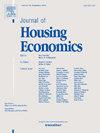Rent control and the supply of affordable housing
IF 2.4
3区 经济学
Q3 ECONOMICS
引用次数: 0
Abstract
We generate the first cross-city panel dataset of rent control reforms and estimate their effect on the supply of rental housing overall and across varying levels of affordability. To identify reforms, we use machine learning algorithms to analyze over 76,000 newspaper articles from 7000 news outlets, spanning 27 metropolitan areas and >4000 census places across the US between 2000 and April of 2021. We then manually validate identified articles to ensure accuracy and combine these data with rental unit counts by affordability level, created using Census microdata. To assess the impact of rent control reforms on rental supply, we employ a two-way fixed effects model with place specific time trends and examine the robustness of our results with a staggered treatment design. Our results provide evidence that more restrictive rent control reforms are associated with a 10-percent reduction in the total number of rental units in a city. When stratified by affordability (based on U.S. Department of Housing and Urban Development definitions of affordability), these reforms lead to an increase in the availability of units affordable to extremely low-income households by about 52 % (with a lower-bound effect equal to 11 %), offset by a decline in units affordable to higher-income households of about 46 % (with a lower-bound estimate equal to 4 %). These findings highlight the complex trade-offs inherent to rent control policies, illustrating differential impacts across income groups and underscoring the nuanced nature of such interventions.
租金管制和经济适用房的供应
我们生成了第一个租金管制改革的跨城市面板数据集,并估计了它们对整体和不同负担能力水平的租赁住房供应的影响。为了确定改革,我们使用机器学习算法分析了2000年至2021年4月期间美国27个大都市地区和4000个人口普查点的7000家新闻媒体的76000多篇报纸文章。然后,我们手动验证已识别的物品以确保准确性,并将这些数据与使用Census微数据创建的可负担水平的租赁单位计数结合起来。为了评估租金管制改革对租金供应的影响,我们采用了一个具有地点特定时间趋势的双向固定效应模型,并用交错处理设计检验了我们结果的稳健性。我们的研究结果提供了证据,表明更严格的租金管制改革与一个城市租赁单元总数减少10%有关。当按负担能力分层时(基于美国住房和城市发展部对负担能力的定义),这些改革导致极低收入家庭负担得起的住房供应量增加了约52%(下限效应等于11%),被高收入家庭负担得起的住房供应量下降了约46%(下限估计等于4%)所抵消。这些发现突出了租金控制政策固有的复杂权衡,说明了不同收入群体的不同影响,并强调了此类干预措施的微妙性质。
本文章由计算机程序翻译,如有差异,请以英文原文为准。
求助全文
约1分钟内获得全文
求助全文
来源期刊

Journal of Housing Economics
Multiple-
CiteScore
3.30
自引率
4.20%
发文量
35
期刊介绍:
The Journal of Housing Economics provides a focal point for the publication of economic research related to housing and encourages papers that bring to bear careful analytical technique on important housing-related questions. The journal covers the broad spectrum of topics and approaches that constitute housing economics, including analysis of important public policy issues.
 求助内容:
求助内容: 应助结果提醒方式:
应助结果提醒方式:


